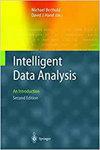An improved hybrid structure learning strategy for Bayesian networks based on ensemble learning
IF 0.8
4区 计算机科学
Q4 COMPUTER SCIENCE, ARTIFICIAL INTELLIGENCE
引用次数: 0
Abstract
In the application of Bayesian networks to solve practical problems, it is likely to encounter the situation that the data set is expensive and difficult to obtain in large quantities and the small data set is easy to cause the inaccuracy of Bayesian network (BN) scoring functions, which affects the BN optimization results. Therefore, how to better learn Bayesian network structures under a small data set is an important problem we need to pay attention to and solve. This paper introduces the idea of parallel ensemble learning and proposes a new hybrid Bayesian network structure learning algorithm. The algorithm adopts the elite-based structure learner using genetic algorithm (ESL-GA) as the base learner. Firstly, the adjacency matrices of the network structures learned by ESL-GA are weighted and averaged. Then, according to the preset threshold, the edges between variables with weak dependence are filtered to obtain a fusion matrix. Finally, the fusion matrix is modified as the adjacency matrix of the integrated Bayesian network so as to obtain the final Bayesian network structure. Comparative experiments on the standard Bayesian network data sets show that the accuracy and reliability of the proposed algorithm are significantly better than other algorithms.基于集成学习的贝叶斯网络混合结构改进学习策略
在应用贝叶斯网络解决实际问题时,很可能会遇到数据集昂贵且难以大量获取,数据集小容易造成贝叶斯网络(BN)评分函数的不准确,从而影响BN优化结果的情况。因此,如何在小数据集下更好地学习贝叶斯网络结构是我们需要关注和解决的重要问题。本文引入并行集成学习的思想,提出了一种新的混合贝叶斯网络结构学习算法。该算法采用基于精英的结构学习器,以遗传算法(ESL-GA)为基础学习器。首先,对ESL-GA学习到的网络结构邻接矩阵进行加权和平均;然后,根据设定的阈值,对相关性较弱的变量之间的边进行滤波,得到融合矩阵;最后,将融合矩阵修改为集成贝叶斯网络的邻接矩阵,从而得到最终的贝叶斯网络结构。在标准贝叶斯网络数据集上的对比实验表明,该算法的准确率和可靠性明显优于其他算法。
本文章由计算机程序翻译,如有差异,请以英文原文为准。
求助全文
约1分钟内获得全文
求助全文
来源期刊

Intelligent Data Analysis
工程技术-计算机:人工智能
CiteScore
2.20
自引率
5.90%
发文量
85
审稿时长
3.3 months
期刊介绍:
Intelligent Data Analysis provides a forum for the examination of issues related to the research and applications of Artificial Intelligence techniques in data analysis across a variety of disciplines. These techniques include (but are not limited to): all areas of data visualization, data pre-processing (fusion, editing, transformation, filtering, sampling), data engineering, database mining techniques, tools and applications, use of domain knowledge in data analysis, big data applications, evolutionary algorithms, machine learning, neural nets, fuzzy logic, statistical pattern recognition, knowledge filtering, and post-processing. In particular, papers are preferred that discuss development of new AI related data analysis architectures, methodologies, and techniques and their applications to various domains.
 求助内容:
求助内容: 应助结果提醒方式:
应助结果提醒方式:


